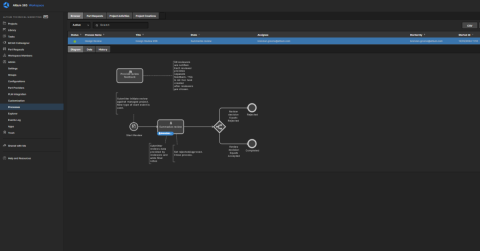Managing PCB Manufacturing Quality Control in the Cloud

Anytime you’re looking for a fabricator to produce your new design, you should ensure they have a robust quality control program. Personnel need to be fully trained to spot defects, inspection and testing equipment need to be in-place and functioning, and processes for documenting and reporting design defects should be standardized. Whenever defects are found during manufacturing, it’s possible they may relate back to a design choice that was missed during a DFM check, and the fabricator needs to be able to quickly report these back to the design team.
So where can quality defects arise and how can manufacturers quickly get this information back to a design team? Sometimes emails can leave too much ambiguity and it is difficult to track progress on specific design changes in the PCB layout. If you’re planning to put a new design into high volume production, there are some basic points that should be checked during fabrication and assembly as part of a PCB manufacturing quality control program.
What to Check for in PCB Manufacturing Quality Control
Any PCB manufacturer that is worth their NRE fees should perform a DFM check to identify potential quality problems before putting a board into production. A DFM check is important for ensuring high yield, but there are other points to check during inspection and testing. These include:
- Electrical testing. This includes a bed of nails test and flying probe tests. Both are non-invasive and can be used to check for opens and shorts on critical nets during fabrication.
- Manual or automated optical inspection. A new board should be inspected automatically or manually after fabrication. Some points that can be identified with automatic inspection include trace size and spacing violations, missing or shorted pads, and incomplete or broken drill holes.
- BGA inspection. BGA components are inspected with an X-ray imaging system.
- TDR testing. This test is used to measure the characteristic or differential impedance of transmission lines as part of impedance controlled routing. This can be done by placing transmission lines on a panel or test coupon and comparing the intended impedance with a reference impedance.
- Standards-specific fab requirements. If you’re manufacturing to IPC Class 3 or 3/A, there are important reliability standards your board will need to comply. Manufacturers should check these points before and during fabrication to ensure compliance and reliability.
- Any unique board features. Advanced high speed/high frequency designs are making use of unique waveguide routing features, and these may require very specialized testing. You should provide meticulous documentation to your fabricator so that they can help with testing.
These tests can be performed before or after final assembly and testing. Anytime manufacturing defects are linked back to the design, these need to be documented and reported. These can be something that was missed during a DFM check, errors that propagated into manufacturing files, errors during footprint assignment, or simply miscalculated electrical values on critical nets.

Anytime a spec is violated or a failure is identified, it needs to be reported back to the design team for corrections. For a high volume run, this needs to happen as early as possible, preferably during an earlier prototyping stage. Whether a defect is identified as part of quality control in a high volume run or during prototyping, the defect needs to be reported back to the design team for correction.
Report Design Defects Through the Cloud
When reporting design defects, a design team needs more than an email and a set of screenshots. Design teams, their customers, and manufacturers have had to resort to sending required design changes and questions between each other using email and screen shots. A better way to callout required design changes is directly in design documents. Quality defects can sit anywhere in the design, and reporting is most accurate when design and reporting software are integrated.
Today, there are cloud-services manufacturers can use to pass QC information back to design teams, and the best services will integrate into your PCB design software. When your manufacturer can attach documentation and comments to a PCB project, they can instantly push it back to you through a cloud service. Designers can then see comments in the layout and any supporting documentation inside your PCB design software. Altium 365 and Altium Designer create just this type of environment for PCB manufacturing quality control.
In the image below, a copper pour issue is flagged for a design team. This polygon unintentionally creates a short, which needs to be corrected by applying clearances to the overlapping nets.

Once design changes are made in Altium Designer, they are pushed back to the Altium 365 Workspace so the manufacturer can review. Design teams and manufacturers gain access to other important features that aid PCB manufacturing quality control:
- Sharing features: Design teams can quickly share project files or a finalized project release with a manufacturer, assembler, customer, firmware developer, or anyone else that needs access to design data.
- Revision tracking: Altium 365 uses Git for revision tracking, giving everyone with visibility in a project access to previous reversions as needed.
- User access control: Team members can be given viewing or edit access to specific projects, and user access can be given to customers or manufacturers as needed.
- Component and library management features: Designers can store and share their component and library data in the cloud, and they can instantly bring data into a new project.
Whether you’re working on a remote team or in an office, Altium Designer® and the Altium 365® platform give you a complete platform for design, data management, sourcing, and PCB manufacturing quality control. Your team can create a productive workflow for collaborative PCB design.
We have only scratched the surface of what is possible to do with Altium Designer on Altium 365. You can check the product page for a more in-depth feature description or one of the On-Demand Webinars.




